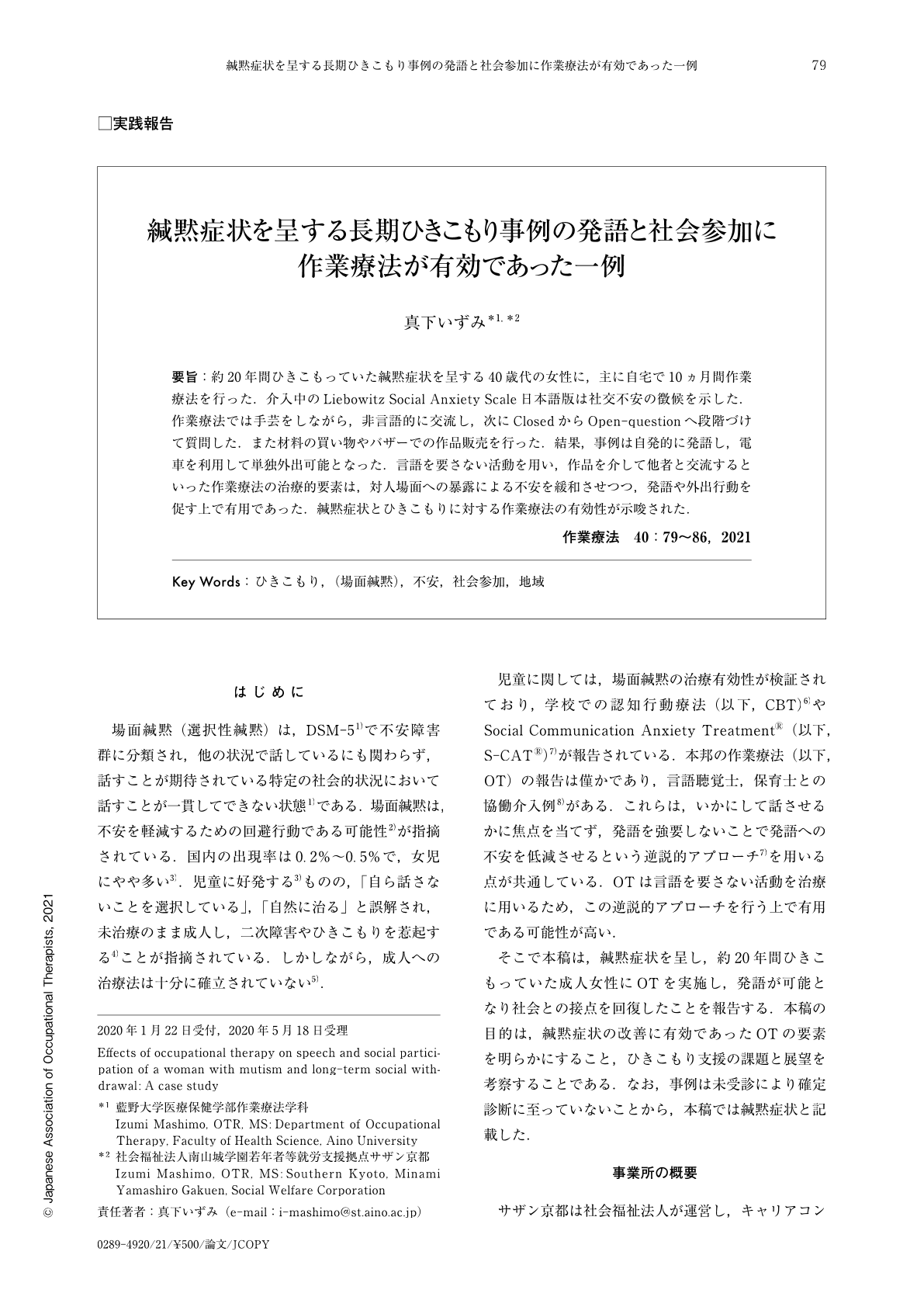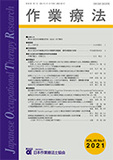Japanese
English
- 販売していません
- Abstract 文献概要
- 1ページ目 Look Inside
- 参考文献 Reference
- サイト内被引用 Cited by
要旨:約20年間ひきこもっていた緘黙症状を呈する40歳代の女性に,主に自宅で10ヵ月間作業療法を行った.介入中のLiebowitz Social Anxiety Scale日本語版は社交不安の徴候を示した.作業療法では手芸をしながら,非言語的に交流し,次にClosedからOpen-questionへ段階づけて質問した.また材料の買い物やバザーでの作品販売を行った.結果,事例は自発的に発語し,電車を利用して単独外出可能となった.言語を要さない活動を用い,作品を介して他者と交流するといった作業療法の治療的要素は,対人場面への暴露による不安を緩和させつつ,発語や外出行動を促す上で有用であった.緘黙症状とひきこもりに対する作業療法の有効性が示唆された.
This study aimed to determine the effectiveness of occupational therapy for mutism and social withdrawal. A woman with untreated selective mutism, who was socially withdrawn for about 20 years, was treated with occupational therapy for ten months mainly at her home. The Liebowitz Social Anxiety Scale Japanese version (LSAS-J) was conducted during the intervention period. Results showed signs of social anxiety. First, the occupational therapist interacted with her non-verbally while creating handicrafts together without forcing her to speak, and then asked graded questions (i.e.;non-verbal communication, close- and open-ended questions) to promote communication. Additionally, the occupational therapist took her shopping to purchase materials for her craftwork, which she sold at bazaars which created opportunities for social interaction. Consequently, she could spontaneously speak and go out. Occupational therapy using activity as a treatment as well as gradual exposure to speaking were useful for reducing anxiety. In addition, communication through client's craftwork contributed to increase contact with society without direct contact with others. This suggests occupational therapy was useful for alleviating mutism and social withdrawal.

Copyright © 2021, Japanese Association of Occupational Therapists. All rights reserved.


